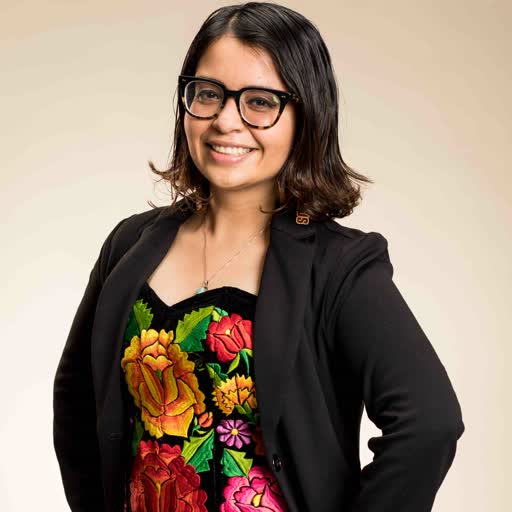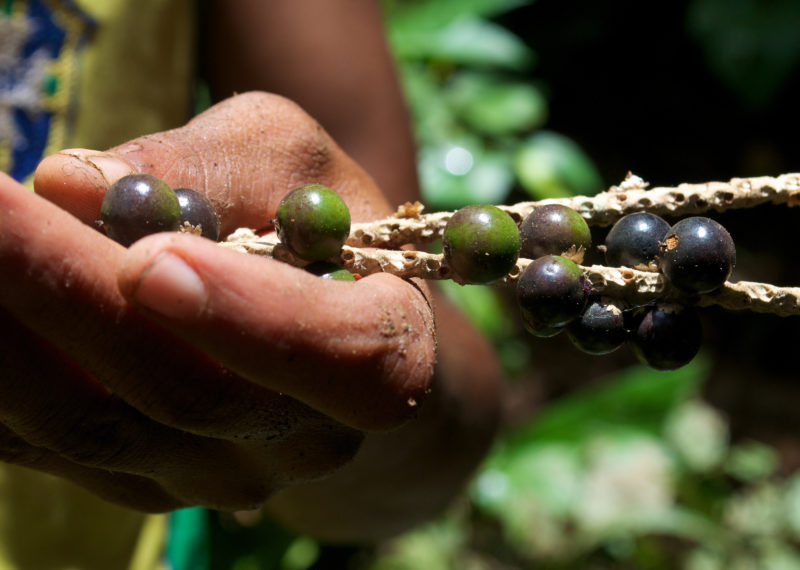Jessica Hernandez found her way to conservation science and environmental justice through her grandmother—and her knowledge about the natural world, accumulated over generations.
Maria de Jesus, a member of southern Mexico’s Zapotec community, showed her granddaughter how to tend the family milpa, the plot where they harvested beans, corn, squash, medicinal plants and even grasshoppers. She led Hernandez on hikes through the mountains surrounding her house, explaining how plants and animals interact in the local ecosystem. “She instilled in me the kinships that we carry on as Indigenous peoples,” Hernandez said.
Hernandez grew up in South Central Los Angeles, the daughter of Indigenous immigrants from Mexico and El Salvador. As a child, she frequently visited her mother’s native Oaxaca. “The community that we had that went beyond humans, to include the animals and the plants.”
When Hernandez went to graduate school to study ecology, she thought the wisdom passed on from her ancestors would be seen as an asset. She wrote a paper on fisheries that weaved in teachings from her father, who had been a fisherman in his native El Salvador. But to her surprise, she was humiliated for it.
“The professor asked me, ‘Is this Jessica’s theory? Where is your citation?” Hernandez recalls in Fresh Banana Leaves: Healing Indigenous Landscapes Through Indigenous Science, out this month.
Hernandez, 31, is an environmental scientist at the University of Washington and an outspoken critic of Western conservation movements, which she says often ignore or co-opts Indigenous science and sideline the communities who have produced that knowledge.
“We’re often seen as areas of expertise rather than experts ourselves,” she said. “We’re seen as research subjects rather than researchers.” In writing Fresh Banana Leaves, Hernandez said she hopes to bring attention to the ways Indigenous science has preserved ecosystems for generations.
Western science has always had a narrow lens, said Kristiina Vogt, a professor at the University of Washington and one of Hernandez’s PhD advisors. “What [Hernandez] has always been able to do is look past that.”

The scientific method may be built on data points, but Indigenous knowledge is also built on observations, Vogt said. It’s just packaged differently—not in academic papers, but in stories. “People are drowning in the data,” Vogt said, but that data doesn’t always translate to practical solutions. Hernandez bridges this divide in her work, she said, weaving together Western data and Indigenous knowledge.
The conservation movement has a long history of sidelining Indigenous peoples and discounting their ecological expertise. When the United States established its national parks system, ultimately setting aside some 85 million acres of territory, it forced Native American tribes from lands they’d stewarded for millennia.
Park monuments still bear the names of men who advocated for the genocide of Indigenous peoples or carried out massacres themselves. Yellowstone’s Hayden Valley is named for a surveyor who called for the extermination of local tribes. Mt. Evans Wilderness in Colorado is named for a territorial governor who was responsible for the massacre of some 200 Cheyenne and Arapaho people. Native groups are advocating for the monuments’ removal.
Instead of honoring those responsible for genocide, Hernandez said she’d like to see monuments to those who preserved the lands for millennia. A growing body of evidence demonstrates that Indigenous peoples are the most effective stewards of the Earth. Though they make up just 5 percent of the global population, they protect some 80 percent of its biodiversity, according to the World Bank, and biodiversity on Indigenous-managed lands often exceeds that of protected areas. Indigenous peoples with titles to their land tend to have the most success at preserving lands, research has found.
Western researchers and companies also have a long history of co-opting Indigenous discoveries—like traditional medicines. Some scholars estimate the market value of pharmaceuticals derived from Indigenous medicine to be in the tens of billions.
Permaculture is another field that borrows heavily from Indigenous practices, Hernandez said. The term was coined by Bill Mollison in the 1970s to describe a type of sustainable agriculture he observed among the Aboriginal Palawa in Tasmania. “Mollison is idolized for this discovery when in reality the Palawa and other Indigenous peoples have been living through this lens for centuries,” she writes.
Hernandez wants to see environmental organizations, governments and the descendants of settlers reckon with their anti-Indigenous histories and elevate Indigenous voices. “It’s like peeling onions. There are so many layers that we have to undo,” Hernandez said. “The first layer is the history that has been silenced or hidden for so many years.”
Hernandez said she’s encouraged by recent developments in the U.S. In June, the Department of the Interior (under the direction of Deb Haaland, the department’s first Indigenous secretary) returned some 18,000 acres in Montana to the control of the Confederated Salish and Kootenai Tribes. In November, the Biden Administration issued a memorandum pledging to consider traditional ecological knowledge in its environmental policies.
The Sierra Club, one of the country’s oldest and largest environmental groups, has acknowledged and disavowed its “substantial role in perpetuating white supremacy,” announcing plans to increase diversity in the club’s leadership, spend more on environmental justice projects and re-evaluate monuments to the club’s former leaders.
For her part, Hernandez is using her credentials—and her large social media following—to bring Indigenous science and voices into academia. “I look at the knowledge that my parents and grandparents held, and I always say they know more about the environment than any professor I have ever had in my career. Indigenous peoples don’t necessarily need a bachelor or a doctoral degree for their knowledge to be valid.”
Last fall, Hernandez taught an Introduction to Climate Change course that included lessons on Indigenous land stewardship and discussions on the ways that Indigenous women are impacted by climate change.
She hopes she can bring a new generation of Indigenous thinkers into the conservation field—while reminding students to look beyond the ivory tower for climate solutions.
This story was made possible by a grant from the Open Society Foundations.


